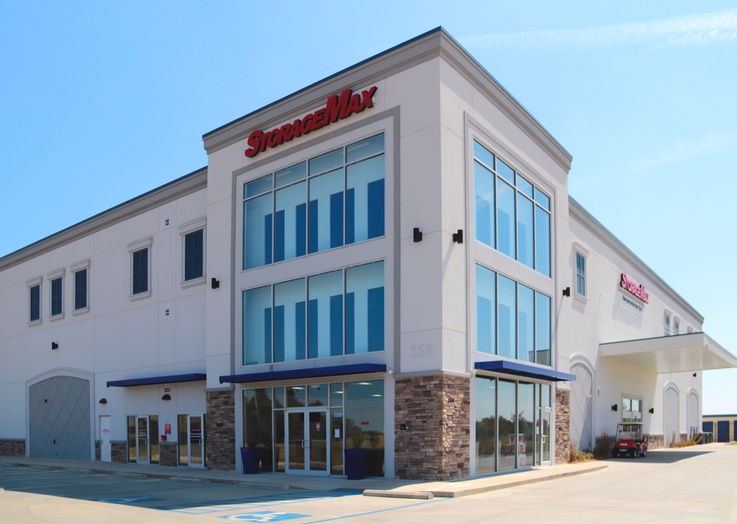Sell, Buy, Build, Or Hold?
Using Industry Insight As A Guiding Light By Steve Libert
Will 2016 pick up where 2015 left off for investors in the commercial real estate marketplace? More specifically, and more importantly to many of us, will the self-storage sector of the commercial real estate market continue the amazing run we have all enjoyed the last few years?
We all know that the real estate industry is cyclical, and the cycles seem to spin a bit faster each time around. Are we at the top of the current cycle? How long can it last? Unfortunately, hindsight is the only consistently reliable method of determining the peaks and valleys of any cycle. While it is anyone’s guess as to exactly what 2016 will bring to the self-storage industry, we may be able to pick up some queues from the commercial real estate industry as a whole as well as the overall economic environment.
When compared with other commercial real estate property types, self-storage is rather unique. While possessing many of the same fundamentals as other investment real estate types, those of us in the industry know that there are distinctive physical, operational, and financial attributes that set self-storage apart from the others. We also know that in an economic environment where many commercial real estate sectors tend to falter, well-located and well-operated self-storage facilities can often continue to thrive. That said, our industry cannot be analyzed in a vacuum and is affected by many of the same factors that shape the commercial real estate industry as a whole.
What Recession?
Throughout 2015, the strength of the commercial real estate industry continued to gain momentum. Not only have values recovered from the “great recession”, but in many instances values have reached new all-time highs in many markets. Many would agree that our industry has never been stronger than was demonstrated in 2015, as evidenced by incredibly high occupancies, growing rents, and stronger profit margins fueled by state-of-the-art management practices and a low cost of debt. When comparing the first three quarters of 2015 to those of 2014, the four largest self-storage REITs showed same-store revenue growth in the six to 10 percent range and NOI growth in the eight to 12 percent range. How long can growth continue at these levels?
Moving Up The Food Chain
For better or worse, 2015 was also a year in which more investors than ever before finally discovered what we in the self-storage industry have known for a long time: Self-storage can be an incredibly great investment, especially when compared to many other real estate investment choices. It’s tough to keep a secret when some of the best performing public REITs in the marketplace are self-storage REITs. To the extent it didn’t happen earlier, 2015 was the year the self-storage cat was officially out of the bag. Both large and small commercial real estate investors alike, who had never before been in our business, entered the self-storage arena in 2015.
High Demand Drives Asset Prices
The discovery of self-storage as preferred asset class by these self-storage investment newbies made 2015 a great year to be a seller, but not so great if you were actively trying to buy. The enthusiasm and inexperience of new entrants into the self-storage sector, combined with a strong consolidator appetite and continued aggressive growth targets of the large operators and REITs, proved to be a potent combination that help define 2015 as a bona fide seller’s market. Fueled by historically low interest rates, this strong demand drove prices for self-storage to record highs, with cap rates rivalling those of the strongest in the commercial real estate pack including multi-family and credit-tenant retail. Cap rates for self-storage transactions in 2015 were regularly below six percent and, in many cases, below five percent. Is this trend sustainable for the foreseeable future?
Build If You Can’t Buy
On the acquisition front, 2015 was the year that the “low hanging fruit” was clearly exhausted, and the “higher hanging fruit” was fiercely fought over, driving prices up further. With demand (and corresponding prices) so high, and industry fundamentals so strong, if they couldn’t buy it they built it. Some things never change in the real estate business, and self-storage is no exception. 2015 was the strongest year for new development of self-storage since the last cycle in the mid 2000s. A major key to the 2015 self-storage development spurt was that lenders finally opened up the construction lending purse strings for something other than multi-family and pre-leased commercial deals. Ground-up construction and conversion projects have been sponsored by developers with varied investment time horizons and investment return requirements: Some developed to hold; some developed to lease up and sell; and others developed to deliver to the REITs upon certificate of occupancy. This last category, referred to as “C of O” transactions, have essentially opened up the self-storage industry to merchant builders. These merchant builders develop with the primary goal of selling (or “flipping”) to the end-investor upon completion. While routinely done in the credit-tenant, build-to-suit retail, and other commercial real estate sectors for many years, merchant building is a relatively new and growing phenomenon in the self-storage world.
Where Are We In The Cycle?
After a faster-than-expected post-recession recovery, a few more years of continued growth, and a red-hot 2015, are we near the top? It depends on who you ask and which property types you are referring to. Some believe that overall market fundamentals are so strong that there is still plenty of room for growth in several sectors of the commercial real estate business, including self-storage. The economic market fundamentals that they point to include strong job growth, the beginning of real wage growth, low cost of borrowing, and new home starts as well as a growing number of rental households—all of which are great for self-storage. While these market factors would certainly seem to bode well for multi-family as well, Sam Zell was a big seller of multi-family assets in October of 2015. The man who has been arguably one of the best at knowing when to buy and sell real estate sold approximately one quarter of Equity Residential multi-family holdings for $5.4 billion dollars, translating into an estimated cap rate of 5.5 percent. Furthermore, in a December 2015 interview by Bloomberg Business, when asked what and where he would buy today, Sam Zell stated, “I am not a big buyer of real estate today.” Does he mean self-storage real estate too?
Sell, Buy, Build, Or Hold?
Is now a good time to sell, or should I wait? Is it too late to make a good buy? If I can’t find a good buy, should I build? As with most things in life, there is no “one-size-fits-all” answer to these questions. 2016 can be the perfect time to do any of the above, but in the real estate business the right answer has always been very specific to each investor’s goals, each individual property, and, maybe most importantly, each sub-market (location, location, location!). If you are a buyer, you will certainly have to look harder than ever before, but the self-storage market is so vast and somewhat fragmented that there are still definitely good buys out there. If you can secure a great development site in a high-demand market with barriers to entry, it would be hard to argue against building. If you have been thinking about selling, now may likely be a good time to take at least some, if not all, of your chips off the table. If you would rather not sell but still want to get some chips off of the table, now is still a great time to refinance at today’s historically high values and low interest rates. If refinancing, one might take a lesson from the last cycle: Don’t over-leverage as interest rates likely will not be as low next time around and value appreciation may slow, stop, or even reverse a bit, creating a problem at the end of the loan balloon term.
While we are in one of the most exciting times in our industry, and the urge may be to take action now or risk missing the boat, the right answer for many self-storage owners may be to simply do nothing, relax, and just enjoy the ride.
With more than 23 years of commercial real estate experience as a lender, investor, developer, advisor, and mortgage broker, Steve Libert is the co-founder of CMM Commercial Mortgage, a leading mortgage brokerage firm specializing in securing financing for self-storage owners nationwide.
More Content
Popular Posts
Recent Posts
When Germantown High School in Gluckstadt,...
It’s comforting to know that no matter how...
A very wise self-storage expert once said...
Senate Bill 709 (SB709) has many in the...
In January, self-storage industry veteran...
In April 1984, the first non-stop commercial...
Raise your hand if you’ve ever made plans,...
Everyone knows it: Investing in real estate...









